Breathing protection - safe working with clean air
Best-possible protection against particles and gases
An adult breathes around 25,000 times every day. That is about 18 to 20 breaths per minute. Clean air is essential for the body to stay healthy. However, we mostly realise its importance only when we no longer have enough of it or it is contaminated and polluted with hazardous substances. These hazardous substances can arise during various work processes. These are very fine particles, gases or vapours. If they get into the mucous membranes or the lungs, they can damage the body and, in the worst cases, even lead to fatality.
Hazardous substances are split into categories:
1. Particles: Particles include dry dusts such as fibres, fine dust or smoke on the one hand, and hygroscopic dusts such as crystals, salts, spores, germs or aerosols on the other.
2. Gases: The gases and vapours group includes free-floating molecules such as ozone and water-soluble, fat-soluble, acidic and alkaline gases and vapours.
With suitable breathing protection, many of these substances can simply be filtered out of the air. Only then can safe working be ensured.
This is how you protect your employees
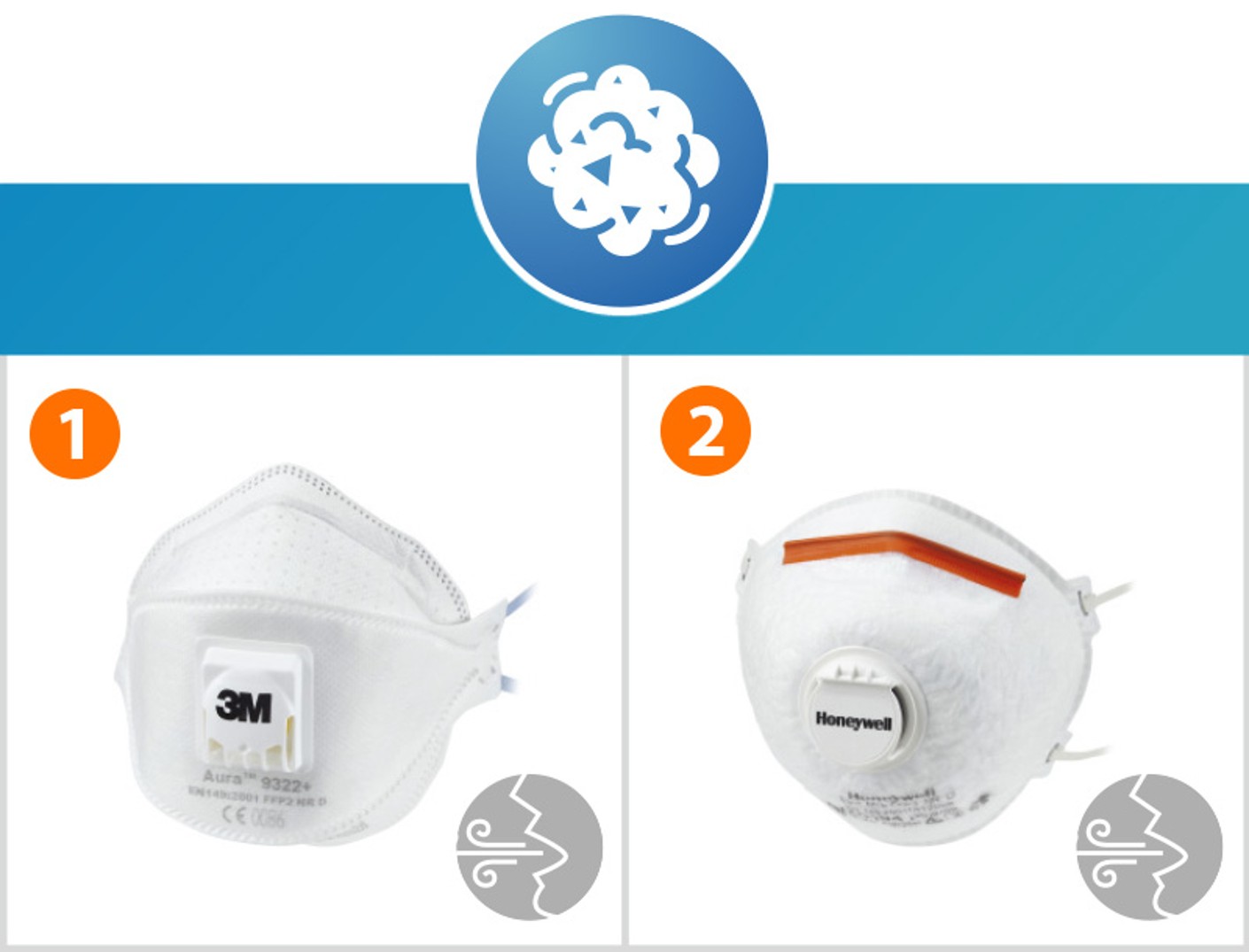
Protection against particles
Dust protection masks provide protection against particles. They are available as disposable masks in the following versions:
1 Foldable: Practical for taking with you due to flat foldable mask body
2 Pre-formed: Easy to use due to pre-formed mask bodyThese protective masks are used during the grinding of brickwork, iron or paint as well as during the processing of glass and mineral fibres or asbestos, for example.
This is how you put the particle filter mask on properly:

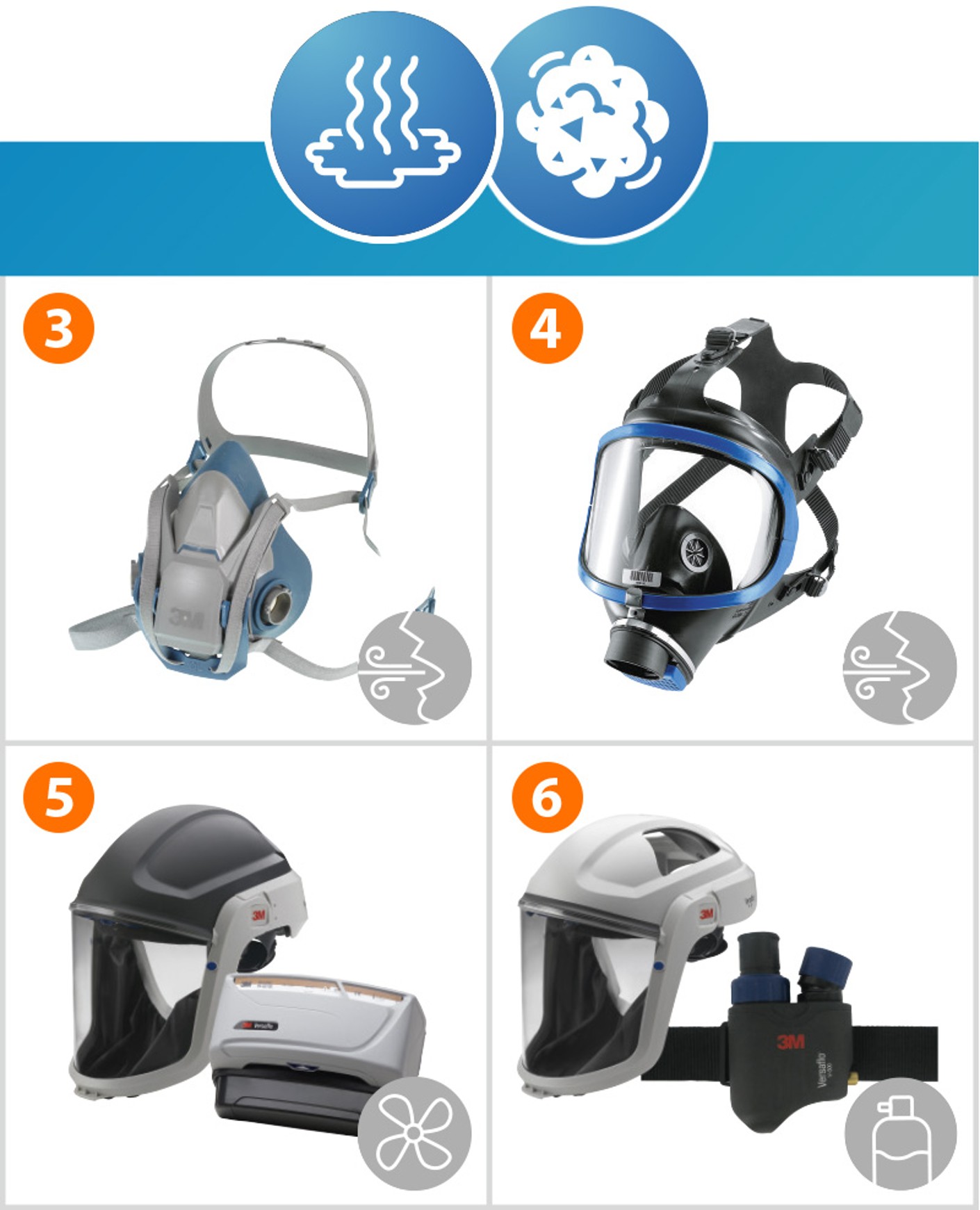
Protection against gases/vapours and particles
Re-usable masks
In order to be able to protect your employees against gases and vapours, you require special gas masks. These re-usable masks are used in the event of frequent use and when worn for long periods and are available in two versions:
3 Half-face masks: stable mask body which covers the mouth and nose
4 Full-face masks: respirator with additional face protection
If masks should also protect against particles, combination filters are the right choice. Here, particle and gas filters are integrated into a filter housing whereby the particle filter is always spatially arranged in front of the gas filter.
Breathing support systems
When worn for long periods and in tough work environments, breathing support systems are available. They are split into two categories:
5 Respirator systems with blower units: filtration of ambient air without hindering breathing (O2 content > 17%)
6 Compressed air systems: supply of clean air in the event of oxygen deficiency (O2 content ≤ 17%)
Breathing support systems are also available with a combination filter.
As the Safety Officer in your company, are you responsible for the annual instructions? This video deals with all the relevant points that are required for the annual breathing protection instructions according to the guidelines of the DGVU (German Statutory Accident Insurance).
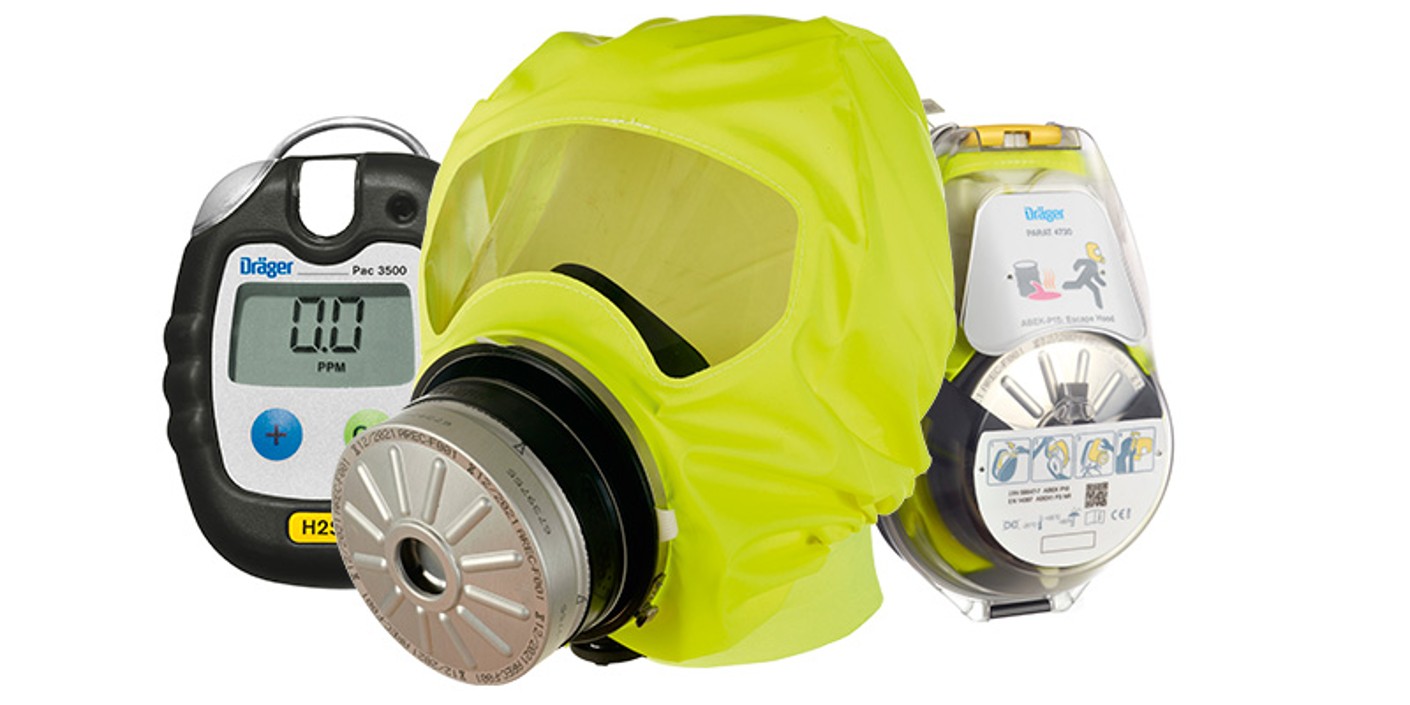
Filter escape hoods and gas gauges
Personal protective equipment in this field also includes what are referred to as filter escape hoods . They ensure adequate protection in emergencies if particle or gas hazards suddenly arise, for example. Also gas gauges warn the wearer if the limits of particular hazardous gases or vapours are exceeded.
Do you have any questions? Our experts are keen to help you at any time:
Special requirements for protective masks
Filter classes for respirators
Fine dust particles and aerosols in the breathable atmosphere are practically invisible and thus pose a major health risk in the working environment. Depending on the protection level and overall leakage, which refer to the filter penetration and leaks to the face and nose, particle filters are split into the following three classes:
- FFP 1: protection against non-poisonous but mucous membrane-irritating particles and harmful substances
- FFP 2: for toxic particles and harmful substances (dusts, smoke, aerosols)
- FFP 3: for toxic, poisonous particles and harmful substances that are carcinogenic and radioactive (viruses, bacteria, mould spores).
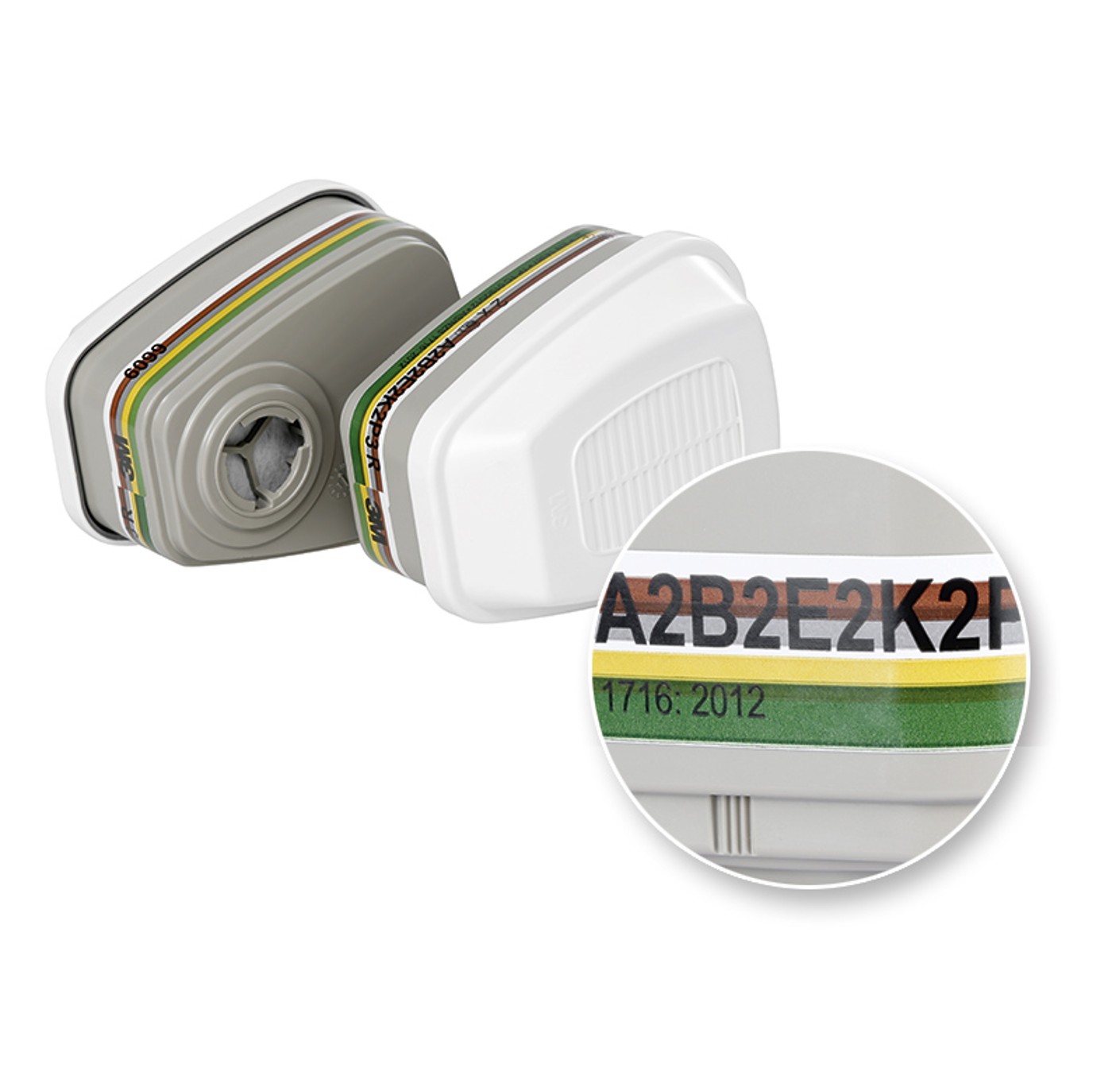
Filter classes and codes on gas masks
Gas and combination filters are also split into three filter classes:
- Filter class 1: for harmful substance limit values below 0.1 Vol. %
- Filter class 2: for harmful substance limit values of 0.5 Vol. %, equating to full-face masks and blower systems
- Filter class 3: for harmful substance limit values from 1.0 Vol. % upwards, equating to blower systems or extraction systems.
The colour markings and the letters on the masks also indicate against which types of gas the breathing protection acts. They simplify orientation at the work place.
Some examples:
- “E” in yellow: sulphur oxides, hydrogen chloride and other acid gases
- “Hg” in red: mercury
- “K” in green: ammonia and organic ammonia derivatives
Select the right breathing protection device
Basic selection criteria for the correct choice of breathing protection are the field of application and the particles and gases arising there. Helpful in this regard are overview pages, in which the relevant activities and potential dangers are listed in detail and appropriate recommendation on required filter classes are provided:
To the overview and selection aid
Furthermore, you can obtain further information in a personal consultation with the PPE experts of the Hoffmann Group.
How do you now choose the best mask?
An example: employees can use different types of paint when spraying. If it is a solvent-based paint, a filter class P3 breathing protection device with an “A” code for organic gases and vapours whose boiling point is above 65°C is recommended.
By contrast, isocyanate-based paints require a class P3 protective mask with the codes “A”, “B”, “E” and “K”. “B” stands for inorganic gases and vapours. “E” provides protection against acidic gases and “K” against ammonia.
If the employee is merely using water-based paints which are low in solvent, a respirator with an “A” code will suffice.
Product selection and consultation at the Hoffmann Group

Quality-driven since 1919 – this is the mantra of the Hoffmann Group. Our portfolio in the field of personal protective equipment includes breathing protection devices from notable manufacturers of the highest quality. Whether it is particle filter masks , half - and full-face masks , respirators with blower unit , filter escape hoods or gas gauges – you will find we have the right product for every field of application.
If you require support with the equipping of your operation, our PPE specialists would be delighted to assist you. They are aware of the statutory regulations and have a wide view of the many manufacturers and models. At your request, we will also support you with hazard analyses, wearing tests and employee training sessions.

Statutory regulations on breathing protection
Respirators are classified as category 3 “Fatal injuries or serious and irreversible damage to health” under the Personal Protective Equipment Directive. Depending on the field of application, devices must also comply with additional statutory regulations. This includes:
- EN 143 for particle filters
- EN 14387 for gas and combination filters
- EN 149 for filtering half-face masks for protection against particles
- EN 405 for filtering half-face masks with a valve for protection against gases or particles
- EN 140 for half-face masks
- EN 136 for full-face masks
- EN 12941 for powered filtering devices incorporating a hood or helmet
- EN 403 for filtering escape devices (e.g. in the event of fire)
Frequent questions on breathing protection
When does a filter have to be changed?
The service life of dust filters depends on many factors – in particular, the concentration of harmful substances, ambient humidity and temperature, as well as the breathing capacity of the user. The end of the service life of gas filters or combination filters that protect against gases can be detected by smell, taste or irritation when inhaling. The end of the useful life of particle filters or combination filters that protect against particles can be detected by increased inhalation resistance. You should use particle filters used for protection against radioactive materials, spores, bacteria, viruses and proteolytic enzymes only once, irrespective of the degree of saturation. AX filters for protection against organic gases and vapours should not be used for longer than one shift (i.e. eight hours). An expiry date is printed on all filters or their packaging. The filters are no longer usable as protection against hazardous substances from that point in time or six months after the original packaging has been opened at the latest.
Is there a limit to how long you can wear breathing protection devices?
An exact wear period is determined by an activity-related risk assessment in which a medical doctor should also be involved. The employer should take technical and organisational measures to restrict as far as possible the burden of harmful substances. Breathing protection must therefore be as strong as necessary, whereas the burden – such as the weight of the device – should be as low as possible.
Are employees allowed to wear full-face masks with beards?
Beards can produce gaps around the sealing lines. People with beards are therefore not suitable for wearing full-face masks. Tests found that either air flowed into the full-face mask from the atmosphere or flowed outwards from inside through the gaps. Firstly, if the ambient air were polluted with poison, an employee would suffer harm. Secondly, the outgoing air induces hypothermia to the affected skin areas.

Do you have any questions? Would you like to receive advice on PPE?
The Hoffmann Group provides you with everything from a single source:
- We provide individual advice, tailored to your needs
- Risk analysis, help with product selection, wearing tests, training sessions and special service offers (glove plans, skin protection plans)
Personal protective equipment also includes: eye protection, hearing protection, foot protection, hand protection, head protection, protective work wear, work clothing, fall protection and skin protection.
This takes you to the overview




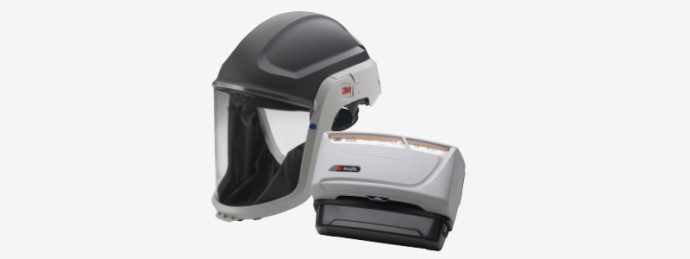



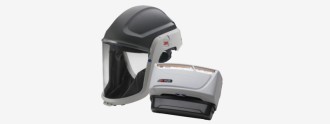
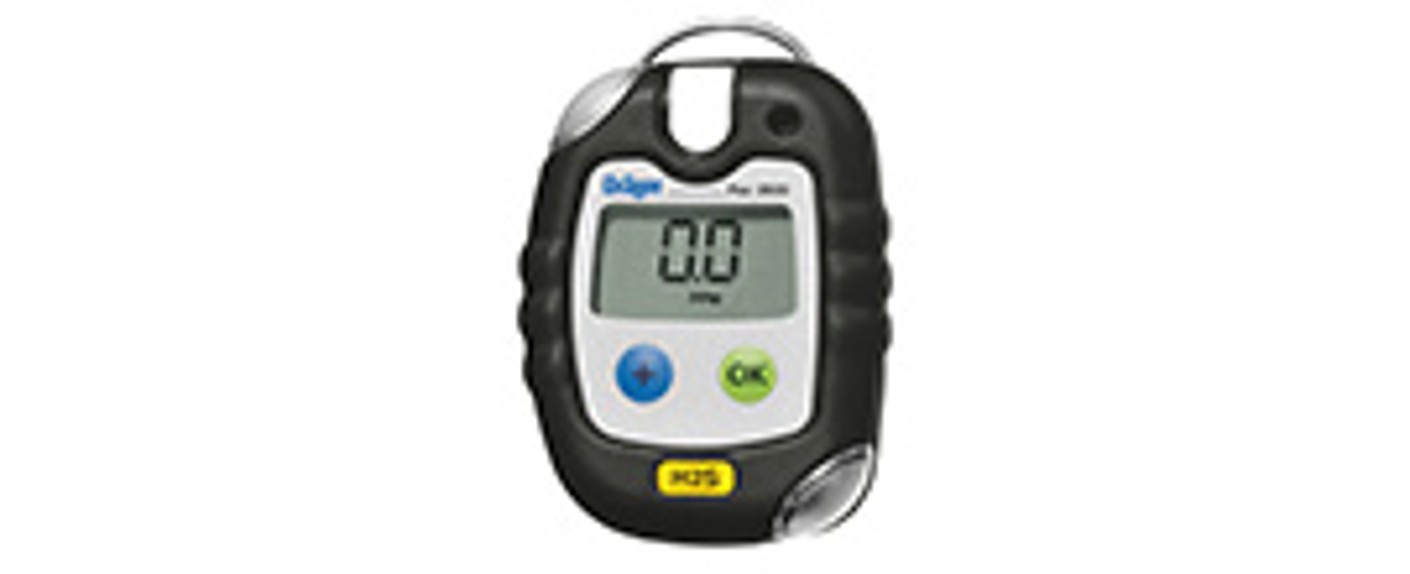


 Contact us now
Contact us now